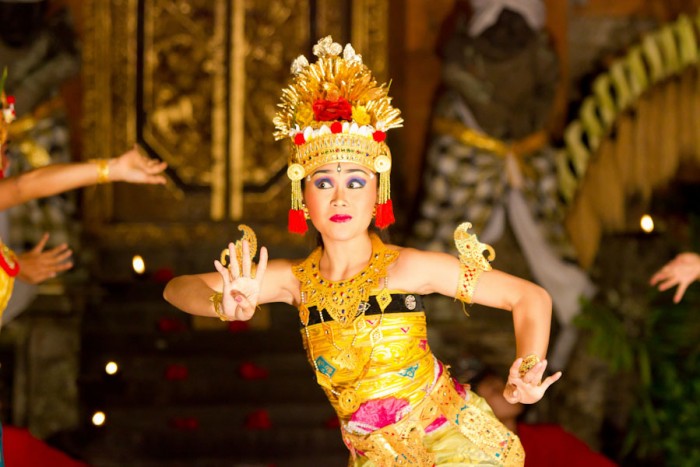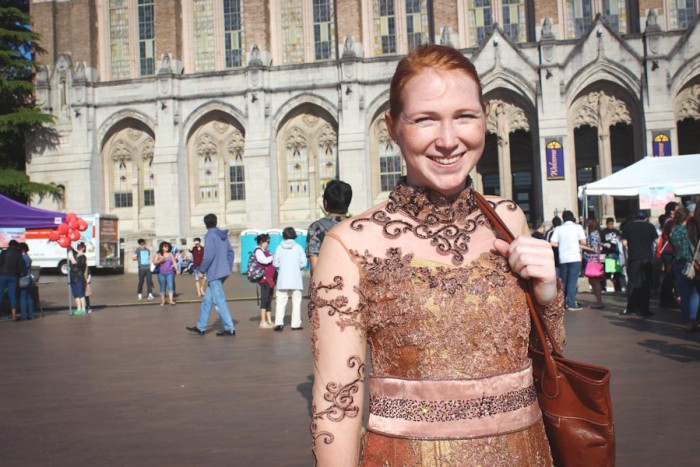
Seattleites are a culturally-aware bunch who can usually differentiate between adobo and bibimbap. But when I moved here almost years ago for college, I found that most people I had met didn’t know much about my home country, Indonesia.
Over time, I spent more time trying to “normalize” myself as American, slowly letting go of elements of my culture and my identity — the language, food and dance. Maybe it was motivated by this feeling of ethnic inferiority that dates all the way back to colonialism. Other Indonesians I’ve met have confessed to struggling with this too.
Greg Dwidjaya also didn’t think as highly of the diverse Indonesian cultures before he moved to Seattle from Jakarta to start his job at Boeing.
“I think for me and a lot of people I know, we tend to look at the West and forget about our own cultures and beauty,” Dwidjaya said.
Now he serves as president of Seattle-Surabaya Sister Cities Association (SSSCA). Surabaya is a port city located in East Java and Indonesia’s second largest city with population of over three million. Seattle and Surabaya have been sister cities since 1991.
“During my time in Seattle I have met a lot of people who don’t have Indonesian blood but have Indonesia in their hearts.”
SSSCA, whose goal is to promote understanding of Surabaya and Indonesia, has organized events on Indonesian politics, economics and culture around the Seattle area.
Dwidjaya sees his work with the association as a source of joy as well as an obligation to his country. He grew up in Jakarta but spent some of his schooling in Surabaya and saw this opportunity to introduce the beauty and complexities of Surabaya — and all of Indonesia — to Seattleites.
“During my time in Seattle I have met a lot of people who don’t have Indonesian blood but have Indonesia in their hearts,” Dwidjaya said. “I think that’s really good, that makes me proud.”
Initially, I was very surprised to see non-Indonesian in Seattle people show interest for anything Indonesia. For instance, I was amazed the first time I saw non-Indonesians dancing traditional dances from Central Java.
I went to the annual Indonesian festival at the University of Washington early this May eager to get a small taste of home. Walking past the big “W” on 45th Street, I couldn’t wait to hear the Indonesian language by Indonesian Seattle-transplants coming from around Washington state — or at least by 400 Indonesian international students who go to the UW. I got there and it was as I imagined it to be and more.

As I was taking in the striking contrast between dancers in their vibrant colored costumes and 92-year-old, Gothic-style Suzzallo library, I saw her. She was wearing a beautiful golden kebaya — a traditional Javanese attire — that was as sparkly as her red hair and freckles.
Natalie Rehberger is an International Studies and Business double major at Evergreen State College. She spent her last year of high school in Surabaya through the Kennedy-Lugar Youth Exchange and Study program. Her interest with Indonesian culture started in fifth grade when she took a class on gamelan, a traditional music ensemble originating from Java and Bali.
So what about cultural appropriation? To put it simply, is the adoption of elements from the culture of an oppressed group by a person from a dominant culture harmful?
I asked Rehberger, decked out in Javanese cultural garb, what she thought. She said she has never been called out for appropriating Indonesian culture. But over the years she says she has talked about this issue with both Indonesians and other non-Indonesians who share her interests in the culture.
“I feel like because I have lived there and I understand about batik, and a lot of my batiks are gifts from Indonesians, that I have been welcomed into that culture,” Rehberger said. “The only issue I think is for example, when a fashion designer takes batik and gives it some new name and doesn’t give credit.”
Some non-Indonesian people I have met in Seattle not only feel welcomed into the Indonesian culture, they even consider it as their identity.
Tikka Sears is an outreach coordinator at the UW Southeast Asia Center. As a child, she tagged along with her mother, Laurie Sears, whose work as a historian brought them to Central Java. Sears remember vividly of her time in Solo — a city one hour away by plane from Surabaya — where she spent fourth and fifth grade.
“I think once you learn a language that culture becomes a part of you.”
Throughout her adult life, Sears found herself going back and forth to Indonesia. In college, she even received funds to travel to Bandung, another city in Java, and collaborate with traditional and contemporary artists.
“Even though I don’t have Indonesian blood or identity in that way, it’s a large part of who I am just because of having lived there,” Sears said. “I think once you learn a language that culture becomes a part of you.”
Meeting Rehberger and Sears have made me realize that I shouldn’t have shed all the layers that made me who I am in the first place, just for the sake of blending in with Americans.
I’m Indonesian. I was born in West Java. I’m proud of my country’s diverse and complex cultures. If others want to explore and embrace them with me, I welcome them.


Thank you for writing this. As a Filipino-American who has also spent time in Indonesia, l definitely think about Indonesia on a daily basis, and I can definitely relate to some points in this article.
Correction: Tikka Sears spent over two years in the Central Javanese city of Solo as a young child. She went to an Indonesian-medium school in Solo for 2nd and 3rd grade. She returned at age 15 for three months and again at 21 for another 3 months. She then received a Fulbright Artist-in-Residence grant to spend another 2 years in Indonesia from 2002-2004. Her first visit to Indonesia was at age 3, when she spent 3 months in Malang and Bali. Indonesian was her first language of literacy, although she did read English before she read and wrote in Indonesian at age 7. She spent half of first grade in a Dutch-medium school in Leiderdorp, Holland. (Laurie Sears)